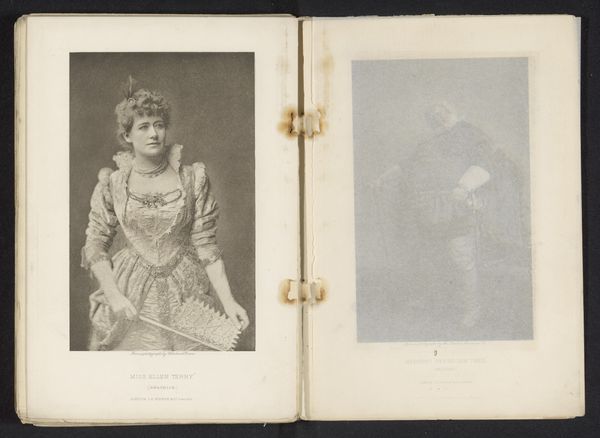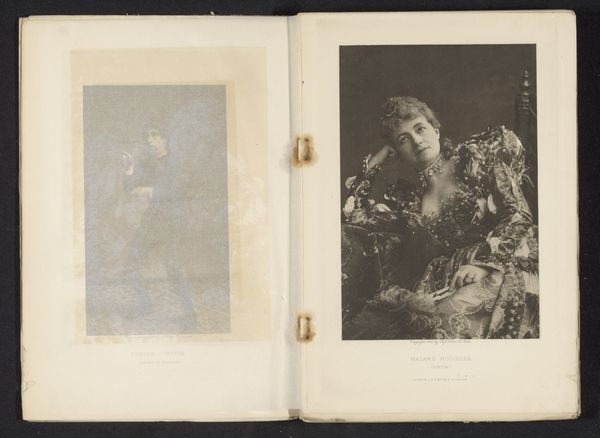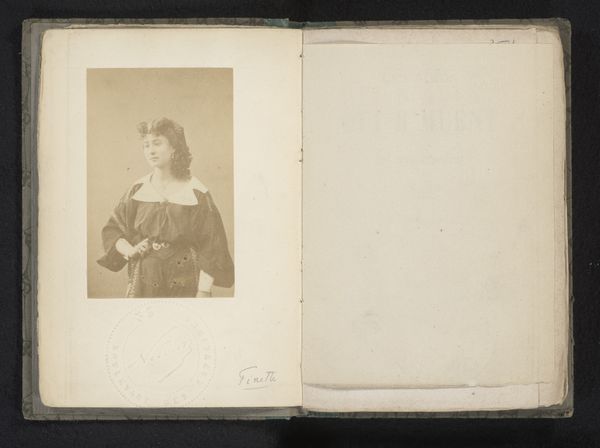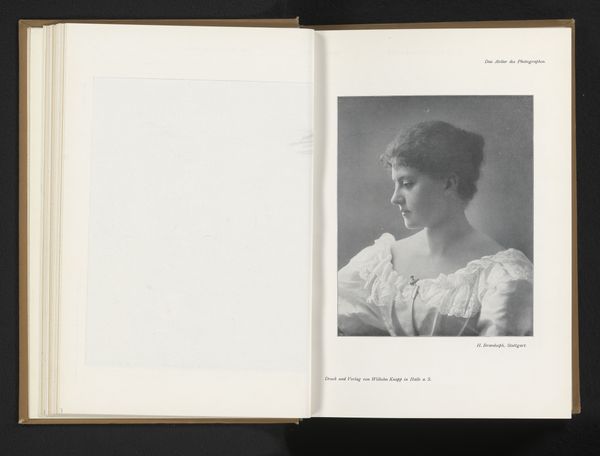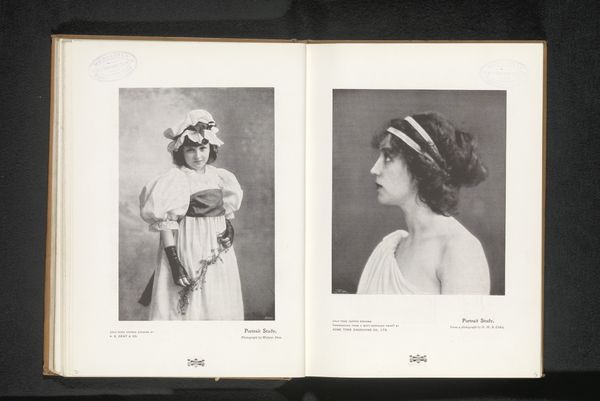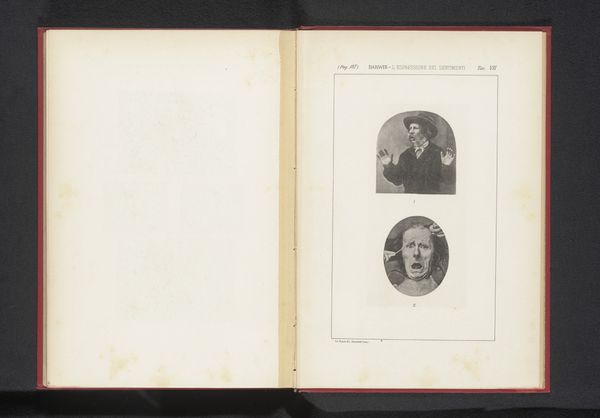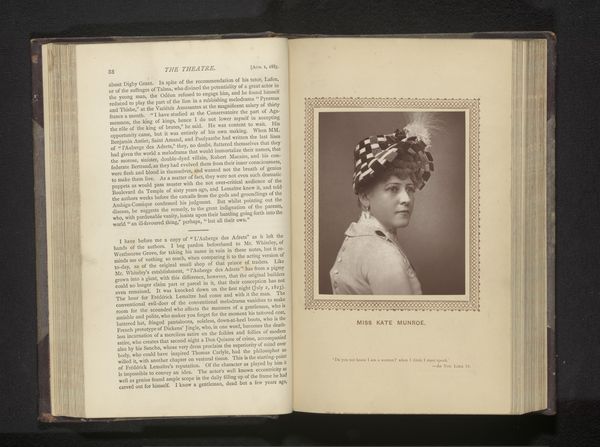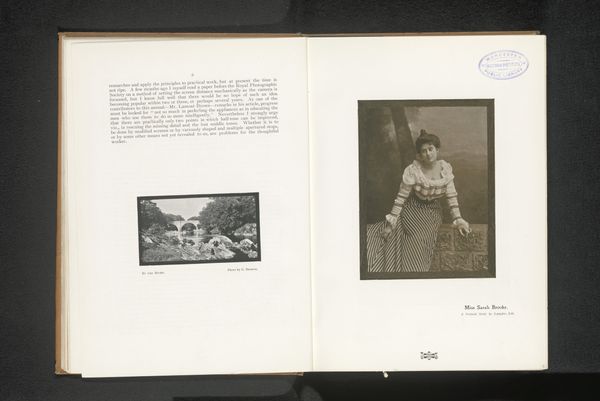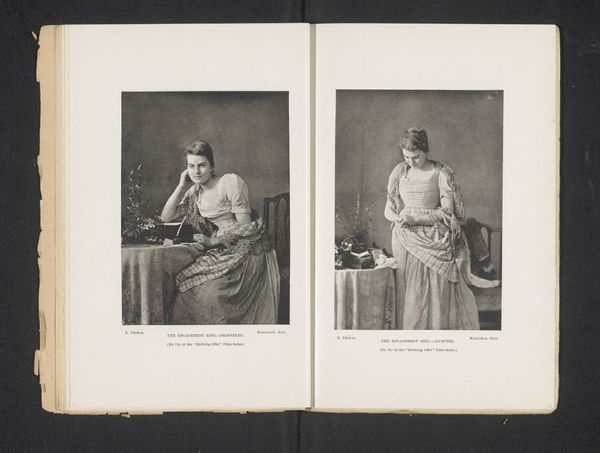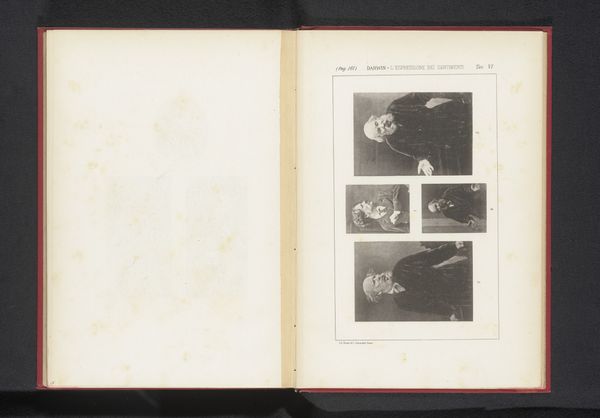
photography, albumen-print
#
portrait
#
aged paper
#
toned paper
#
homemade paper
#
ink paper printed
#
sketch book
#
photography
#
personal sketchbook
#
coloured pencil
#
symbolism
#
sketchbook drawing
#
sketchbook art
#
albumen-print
#
historical font
Dimensions: height 196 mm, width 121 mm
Copyright: Rijks Museum: Open Domain
Curator: Immediately, I’m struck by the texture of this page, it looks almost handmade. The faded tones also convey a poignant mood. Editor: Yes, this is a reproduction of two photographs, contained within what appears to be a personal sketchbook. The photographic portraits feature theatrical luminaries Henry Irving and Miss Ellen Terry. Specifically, the portrait on the right depicts her in the role of Ophelia. The image dates to before 1890 and is credited to Window & Grove. Curator: It’s the deliberate positioning of Terry, though, that interests me the most. As Ophelia, clutching sprigs, her gaze avoids direct contact, almost drifting towards another plane. The symbol of her delicate state, her sanity teetering on the edge of madness, feels overwhelmingly constructed. Editor: Precisely! The way she clutches the sprigs, and her softly draped gown, amplifies that emotional rawness. The interplay between the softness of her features and the sharpness of the floral details contributes to a captivating formal tension. It creates visual interest within a very limited grayscale. Curator: Looking at the photograph on the left, it brings up interesting conversations about Victorian celebrity and representation. What narratives are at play in the decision to juxtapose Irving and Terry? How does this interplay contribute or undermine broader power structures present on the Victorian stage? Editor: Absolutely. There is, of course, that interplay between theatrical performance and reality, artifice and the personhood behind that. Note also the use of light. The studio setting permits subtle gradations that define features and fabric in soft chiaroscuro, creating the likeness and defining it structurally through the control of tonality. Curator: It reminds me that photographs from that period were incredibly self-conscious. Individuals often curated their personas carefully for public consumption, presenting specific versions of themselves. Editor: A calculated image. We can perceive, though, beyond any intentionality. Look again at how composition, how structure, supports, in this image, that ultimate presentation of self. Curator: Examining it in tandem with Irving's more stoic portrait to the left allows the image to explore these representations. It’s the power of visual syntax at play. Editor: An elegant study in performance and photography. Curator: The photo as a space where social, gender and historical currents beautifully meet.
Comments
No comments
Be the first to comment and join the conversation on the ultimate creative platform.
